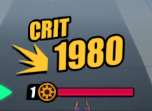If you are new to Dislyte and still being unfamiliar with some of the basic terms like Miss, Crit, Counter, AP, ACC, RESIST, etc. and are looking for the class countering system, this article is for you!

Elemental Classes and the Countering System
- All Espers (heroes) and Miramon (Boss) can be grouped into four major elemental classes: Inferno, Wind, Flow, and Shimmer.
- The first three counter each other in the order: Inferno > Wind > Flow > Inferno. Shimmer neither counters nor is countered by other elements.

- Attackers belonging to a superior element class gain a +15% chance to trigger a Crit and +50% to Counter.
- Attackers belonging to a disadvantaged class suffer a +50% chance to Miss. Determining Attack Outcomes The result of an attack action is judged on many factors such as the differences in stats and other metrics between the attacker and target which may trigger a Miss, Crit, or Counter.
Determining Attack Outcomes
The result of an attack action is judged on many factors such as the differences in stats and other metrics between the attacker and target which may trigger a Miss, Crit, or Counter.
 |
Miss: triggering a Miss deals 25% less damage than otherwise. |
 |
Crit: triggering a Crit deals extra bonus damage to the target that scales according to the attacker’s C. DMG rating. |
 |
Counter: triggering Counter deals 30% more damage than otherwise. |
Attack outcomes are judged in the order of Miss > Crit > Counter.
There is no need to determine a subsequent result if either of the first two are triggered.
Status Effects (Buffs/Debuffs)
Espers and Miramon can both cast a wide range of potential status effects lasting for many turns using abilities or Relics.
![]() Ongoing beneficial status effects (buffs) are highlighted in green.
Ongoing beneficial status effects (buffs) are highlighted in green.
![]() Ongoing negative status effects (debuffs) are highlighted in red.
Ongoing negative status effects (debuffs) are highlighted in red.
![]() Undispellable/unremovable status effects tagged as ongoing effects will be highlighted by a golden frame
Undispellable/unremovable status effects tagged as ongoing effects will be highlighted by a golden frame
![]() Ongoing status effects that ignore ACC and RESIST, cannot Miss, and must trigger are highlighted by a silver frame.
Ongoing status effects that ignore ACC and RESIST, cannot Miss, and must trigger are highlighted by a silver frame.
Check out our Buffs & Debuffs article for the full list!
ACC and RESIST
The success of any ongoing negative status effect (including dispels or AP debuffs) from an Esper or Miramon will be initially judged according to its chance to trigger (as outlined in the ability description).
Once this initial judgement has been made, if the target’s RESIST minus the attacker’s ACC is smaller than 20%, then the target has a 20% chance to block the effect. Once this initial judgement has been made, if the target’s RESIST minus the attacker’s ACC is greater than 20%, then this amount is the target’s chance to block the effect.
- ACC: the chance for an attacker to successfully hit a target with an ongoing negative status effect increases along with their ACC rating.
- RESIST: the chance for a target to block an incoming, ongoing status effect increases with their RESIST rating.
Read more:
Action Points (AP)
All Espers and Miramon receive an “Action Point bar”. When this AP bar reaches 100%, then their turn begins.

Certain things modify this AP bar including:
- All units experience an AP increase based on their current SPD at the start of battle or the end of someone’s turn.
- Many positive and negative status effects can increase or reduce AP.
- If 2 or more units reach 100% on the AP bar at the same time, whichever has the highest SPD acts first.
Read more: How AP Works and How SPD Works
For the other basic attributes, please take a look at our Basic Attributes article.
Cooldowns
The vast majority of non-basic abilities can only be cast at certain preset intervals, that is, after their cooldown has elapsed.

In other words, abilities cannot be used prior to the end of their cooldown.
A cooldown moves 1 turn closer to expiration upon the completion of its character’s turn. The number of turns remaining on a cooldown can be significantly altered (that is, increased or decreased) through the use of buffs/debuffs.


